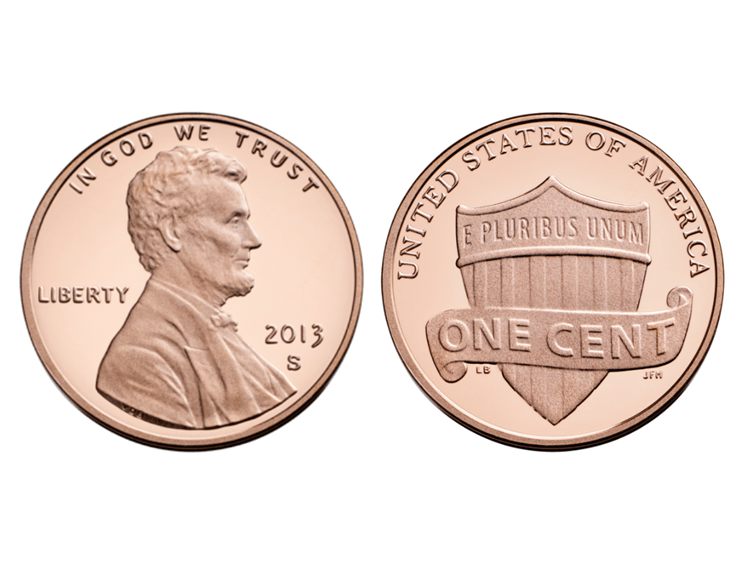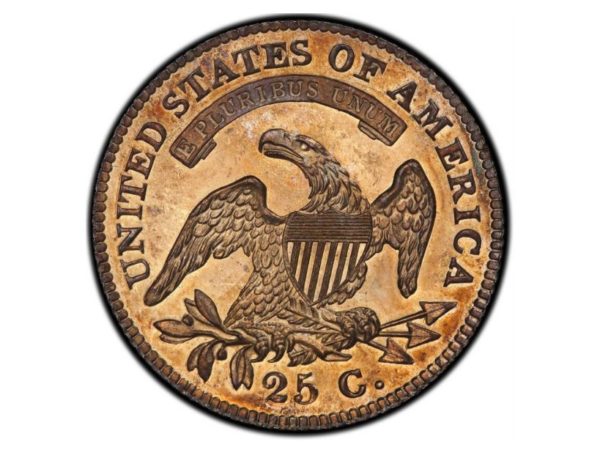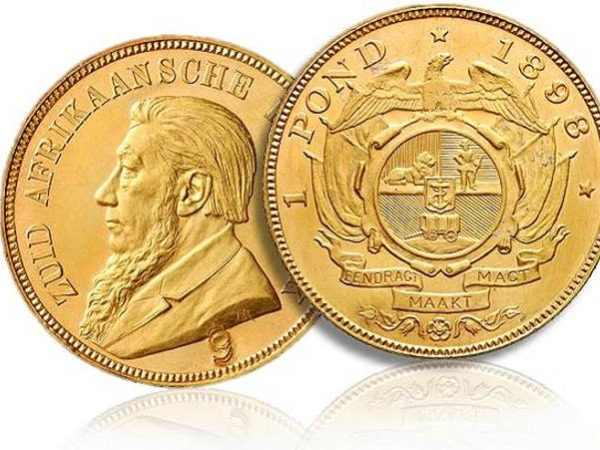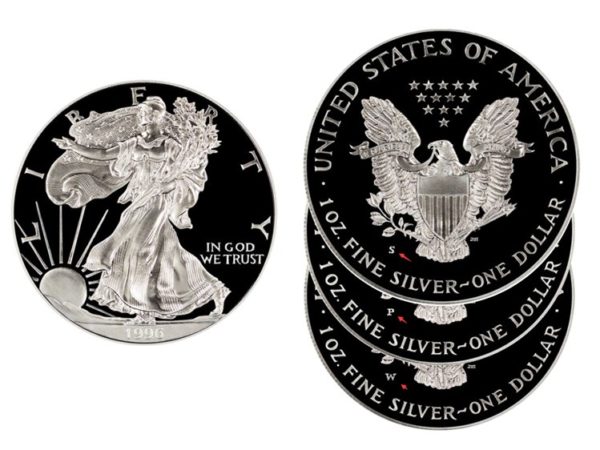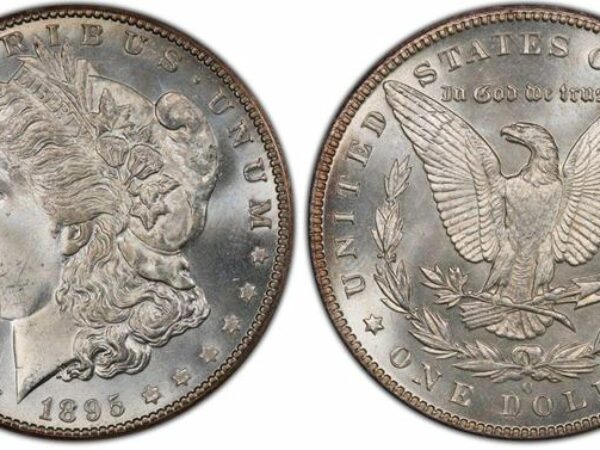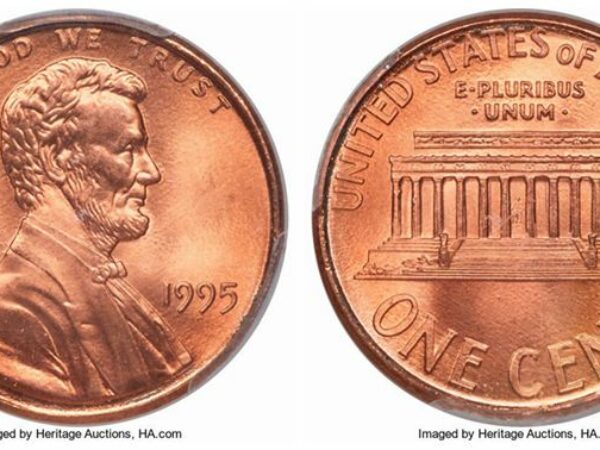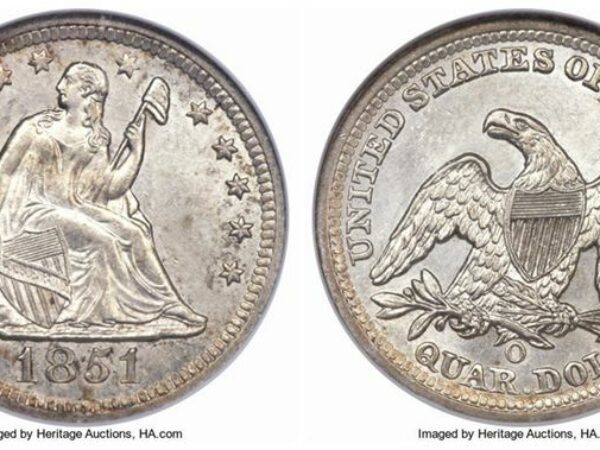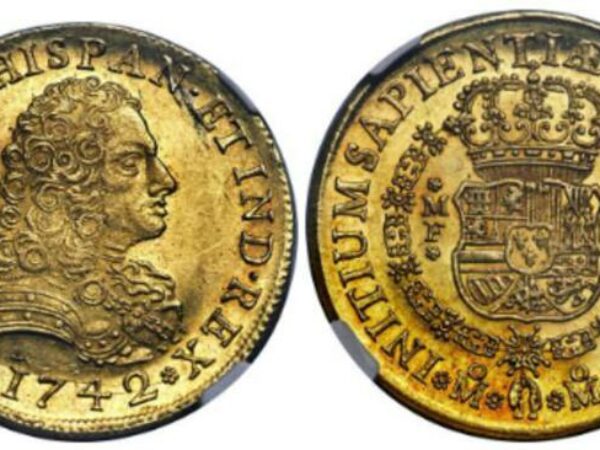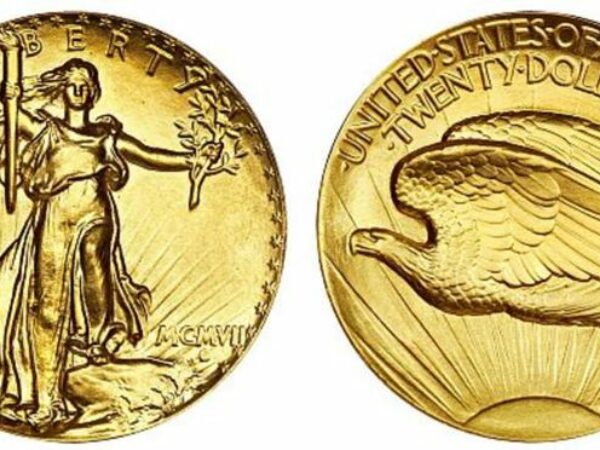Treasure is often found in unlikely places— the back pocket of old jeans, the car’s pigeonhole, the cookie turned into a swear jar, and sometimes, even in our purses.
However, most of us can’t tell what the value of our coins is judging by face value alone (pun intended). Some of the rarest coins in history have been found by ordinary people who were either stunned by them or unaware that they were worth collecting at the time.
Some of the rarest coins in history have been found by ordinary people who were either stunned by them or unaware that they were worth collecting at the time.
Table of Contents
Wheat Pennies – A Brief History
Wheat Pennies or Lincoln cents, as they are sometimes called, have a peculiar origin. They were the first coins to be made which had a human face on them— the face of the iconic president, Abraham Lincoln.
The Lincoln cent (also referred to as the Lincoln penny) is a one-cent coin in the United States that dates back to 1909.
Victor David Brenner designed the heads side of the coin, as was the original reverse, portraying the two stalks of wheat ( thus the term “wheat pennies” ) struck between 1909-1958.
The Lincoln cent was minted first in 1909, and it is one of the last withstanding coin designs ever made by the U.S mint at the Philadelphia, Denver, and San Francisco mints. Their mint marks are on the obverse of the coin below the date.
However, all coins made at Philadelphia mint did not feature a mintmark. The face of Abraham Lincoln was put on the obverse of the penny to remember the centennial of his birth upon the request of President Theodore Roosevelt.
Even though wheat pennies were originally minted and issued from 1909 to 1956, however, these coins are still in circulation. Data suggests that there are still about 200 Lincoln pennies in circulation, and one is probably sitting in a cookie jar in your house right now.
Although not all pennies are collectible coins, most of them are circulation coins and may only be valuable as a result of their mint year or condition. However, you have to be knowledgeable enough to determine which of your wheat pennies are valuable and how much they are worth.
Unlike quarters, dimes, and nickels, they can be easily overlooked as they are small and oftentimes appear very similar to each other. This is all true to looking at them through a modern collector’s lens. However, the nostalgic feeling and intrigue of finding a Wheat Penny persevered, making it one of the most collected coins in history.
| Value | 1 cent |
| Mass | 2.5 g (current composition). Bronze cents from 1909 to 1982 are 3.11 g; wartime steel cents are 2.7 g |
| Diameter | 19.05 mm (0.750 in) |
| Edge | Plain |
| Composition | 1909–1942, 1944–1982: 95% copper, remainder tin or zinc 1943: zinc-plated steel 1982–present: copper-plated zinc (97.5% Zn, 2.5% Cu) |
| Years of minting | 1909–present |
| Mint marks | P (2017 only), D, S, W (2019 only). Under date on obverse. No mint marks used from 1965 to 1967, in any year except 2017 at the Philadelphia Mint, or in any year except 2019 at the West Point Mint. |
Reasons Why You Should Collect Wheat Pennies
1. Personal entertainment
When looking out for a new hobby, coin collection doesn’t leap right off our heads. However, very few things are as entertaining and intriguing as the habit of collecting something — in this case, wheat pennies.
While coin collecting may turn out to be very lucrative, collecting coins you love should be the main reason you decide to do this. You have to have a genuine passion for it. Plus, collecting wheat pennies is so easy, to begin with.
2. The intrigue
Consider your coin collecting the ultimate treasure hunt because technically, it is. This is another reason why you should get into coin collecting. The intrigue that accompanies the process of searching for a coin and finally finding it is truly second to one. Not even notable, incredibly busy people like past US president John Quincy Adams and actress Nicole Kidman reportedly could not escape this intrigue.
3. Financial Investment
This is perhaps the commonest reason people get into coin collecting. The hope that the change they are logging about in their purses could be worth a fortune! While most wheat pennies are by no means rare, there are still a few of these coins that can fetch loads of money.
Before passing off all your coins, why not check if any of them are among those on the list.
But you can’t exactly do this unless you know how to tell your coin is valuable right?
So I’m going to show you ways to know if your wheat penny is valuable.
How To Know A Valuable Wheat Penny
The value of a wheat penny will vary significantly according to the year and the condition.
Do research
You can save the time and money spent at an Appraiser’s place by doing your research first on if your coin is worth anything. There’s a book both the American Numismatic Society and other known collectors swear by. This book, “A guide book of United States coins.”, also known as the”Red book” is a great place to start your learning journey from. It contains pictures of several coins, including wheat pennies and how much they are worth.
Observe your coins
Observing your coins is another way to determine if you have something rare or of value. Coins that have errors, die cracks and missing elements can be quite valuable. Check for omissions of words and the edges of the images. Once you know these errors, mistakes, and things that can be missing, it becomes easier to identify valuable wheat pennies.
Mintmarks
Where a coin was minted can affect its value. Mint marks are letters showing the location where the coin was minted and the year. Older coins usually had their mint mark on the reserve(tail end of coin) but coins in more recent times have their mint mark at the Obverse (head). Mint marks are usually indicated by letters. For instance, San Francisco was an S, Philadelphia was a (P) or no mint mark at all, and Denver was a (D). Finding coins with no mint mark at all or an older mint year often means you have found something that’ll be considered valuable.
Sort out the fakes
Cross-checking the authenticity of your wheat penny is something you have to do. How do you know if your wheat penny is fake and thus valueless? – If it’s a double-headed coin, have you thoroughly checked and ensured there was no joining or combining of two coins?
Top 10 Most Valuable Wheat Pennies
No. |
Type |
Series (Year) |
Grade |
Price |
1 |
1936 P Doubled Die Obverse |
1936 |
MS(63) |
$2,524 |
2 |
1909 P VDB |
1909 |
PR(63) |
$3,126 |
3 |
1914 D |
1914 |
MS-63 |
$3,764 |
4 |
1917 P Doubled Die Obverse |
1917 |
MS-63 |
$6,504 |
5 |
1955 P doubled-die |
1955 |
MS-63 |
$17,057 |
6 |
1922 D No D Mint Mark |
1922 |
MS-63 |
$30,724 |
7 |
1958 P Doubled-Die Obverse |
1958 |
MS-63 |
$219,521 |
8 |
1943 S Bronze |
1943 |
MS-60 |
$579,631 |
9 |
1944 S Steel Cent |
1944 |
MS-63 |
$1,110,923 |
10 |
1943 D Copper |
1943 |
MS-65 |
$2,251,252 |
1. 1936 P Lincoln Wheat Cent : Doubled Die Obverse
Grade: MS(63)
Price: $2,524
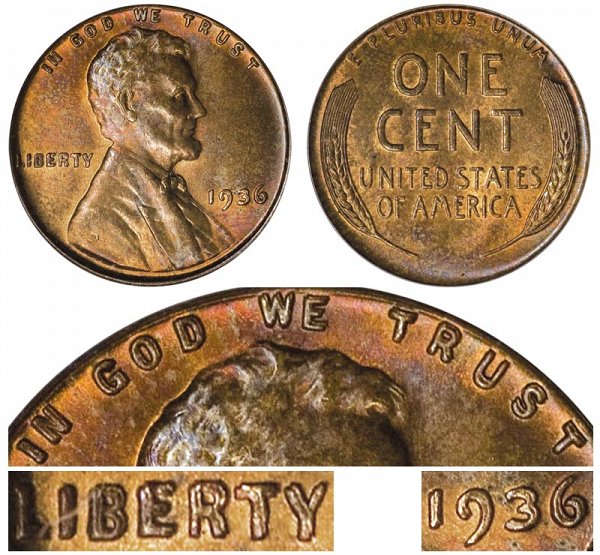
The US Mint produced a 1936 Doubled Die Obverse (DDO) Lincoln Wheat Cent (Penny) error. This can best be identified by noticing the doubling of the words in the motto “IN GOD WE TRUST” and the word “LIBERTY”. The most prominent doubling is of the date 1936 as depicted in the example image of the coin above. Source image for example above is courtesy of Heritage Auctions.
Series |
Location |
Quantity Minted |
1936 P Doubled Die Obverse |
Philadelphia (No Mint Mark) |
N/A |
Series |
G
(4) |
VG
(8) |
F
(12) |
VF
(20) |
EF
(40) |
AU
(50) |
MS
(60) |
MS
(63) |
PR
(63) |
1909 P Doubled Die Obverse |
$28 |
$42 |
$80 |
$135 |
$227 |
$399 |
$552 |
$2,524 |
– |
2. 1909 P VDB Lincoln Wheat Cent
Grade: PR(63)
Price: $3,126
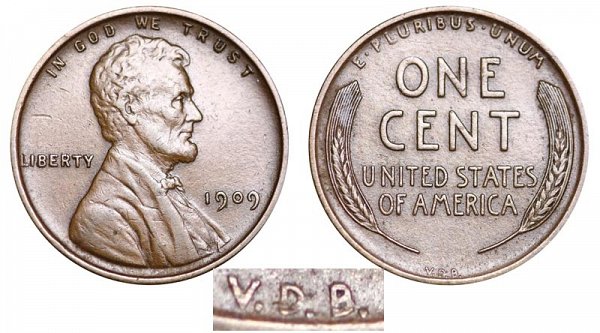
Series |
Location |
Quantity Minted |
1909 P VDB |
Philadelphia |
27,995,000 |
Series |
G
(4) |
VG
(8) |
F
(12) |
VF
(20) |
EF
(40) |
AU
(50) |
MS
(60) |
MS
(63) |
PR
(63) |
1909 P VDB |
$13 |
$14 |
$17 |
$18 |
$20 |
$23 |
$24 |
$34 |
$3,126 |
3. 1914 D Wheat Penny
Grade: Uncirculated (MS-63)
Price: $3,764
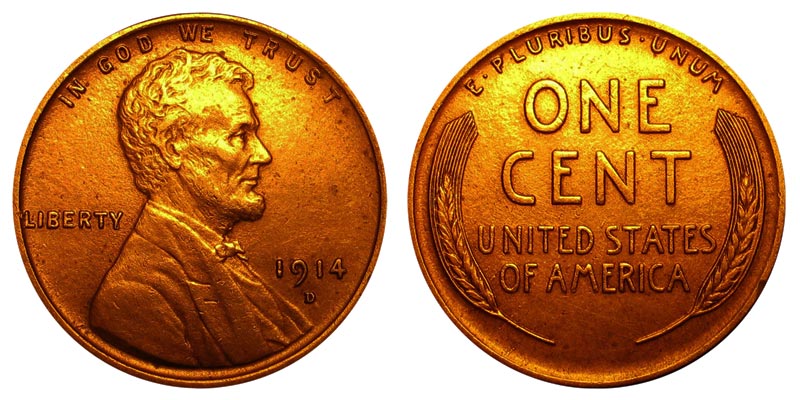
Three different Mints produced the 1914 Lincoln Wheat Penny: Denver, Philadelphia, and San Francisco. Each Mint placed “mintmarks” on the obverse (front) side of the Pennies just below the date on the lower right-hand side. The Denver Mint used a “D” and the San Francisco Mint used an “S”. The main Mint in Philadelphia did not use a mintmark.
Series |
Location |
Quantity Minted |
1914 No Mint Mark |
Philadelphia |
75,238,432 |
1914 D |
Denver |
1,193,000 |
1914 S |
San Francisco |
4,137,000 |
1914 D Lincoln Wheat Cent Value Chart
Good (G-4) |
Very Good (VG-8) |
Fine (F-12) |
Very Fine (VF-20) |
Extremely Fine (EF-40) |
About Uncirculated (AU-50) |
Uncirculated (MS-60) |
Uncirculated (MS-63) |
$227 |
$285 |
$343 |
$481 |
$999 |
$1,713 |
$2,277 |
$3,764 |
4. 1917 P Wheat Penny (Doubled Die Obverse)
Grade: Uncirculated (MS-63)
Price: $6,504
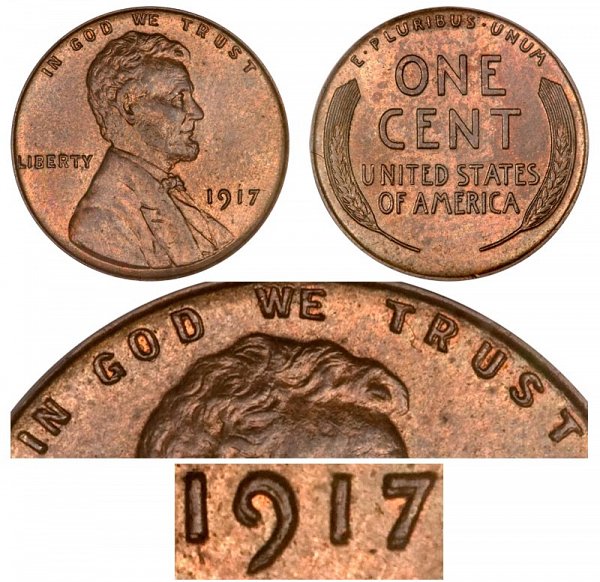
The 1917 Doubled Die Obverse DDO Lincoln Wheat Cent (Penny) is one of the more valuable doubled die errors. This can best be identified by noticing the doubling of the words “IN GOD WE TRUST” and the 1917 doubled date as depicted in the example image above.
Series |
Location |
Quantity Minted |
1917 P Doubled Die Obverse |
Philadelphia (No Mint Mark) |
N/A |
1917 P Wheat Penny (Doubled Die Obverse) Value Chart
Good (G-4) |
Very Good (VG-8) |
Fine (F-12) |
Very Fine (VF-20) |
Extremely Fine (EF-40) |
About Uncirculated (AU-50) |
Uncirculated (MS-60) |
Uncirculated (MS-63) |
– |
– |
$256 |
$207 |
$1,134 |
$1,812 |
$3,127 |
$6,504 |
5. 1955 P doubled-die Lincoln penny
Grade: Uncirculated (MS-63)
Price: $17,057
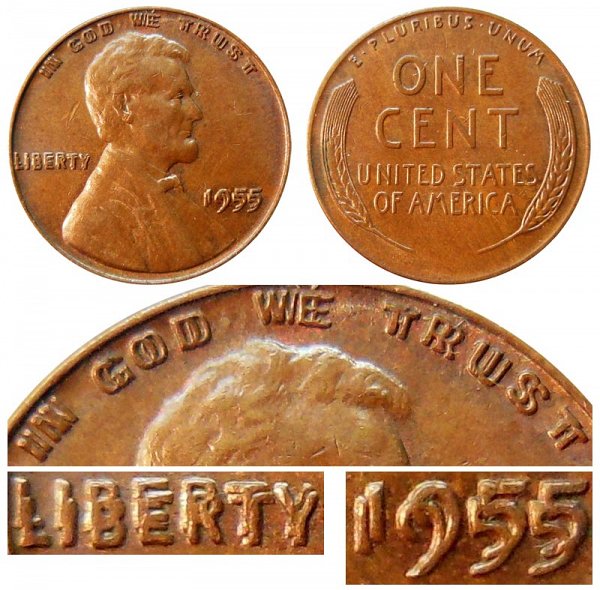
The 1955 Doubled Die Obverse DDO Lincoln Cent (Penny) is the most famous double die penny and error of them all. The obverse of this coin depicts one of the most prominent displays of doubling which makes it extremely popular and valuable. The motto “IN GOD WE TRUST” and the word “LIBERTY” are very clearly doubled as is the 1955 date as depicted in the example image above. It is very hard to miss this error so it is easy to tell the difference between the real one and the 1955 “poor mans” doubled die which is no where near as noticeable.
Series |
Location |
Quantity Minted |
1955 P |
Philadelphia |
330,958,200 |
1955 P Doubled-Die Obverse |
Philadelphia |
N/A |
1955 D |
Denver |
563,257,500 |
1955 S |
San Francisco |
44,610,000 |
Series |
Good (G-4) |
Very Good (VG-8) |
Fine (F-12) |
Very Fine (VF-20) |
Extremely Fine (EF-40) |
About Uncirculated (AU-50) |
Uncirculated (MS-60) |
Uncirculated (MS-63) |
1955 P |
– |
– |
$0.05 |
$0.11 |
$0.13 |
$0.17 |
$0.39 |
$1.13 |
1955 P Doubled-Die Obverse |
$784 |
$1,318 |
$1,713 |
$1,981 |
$2,278 |
$2,489 |
$4,261 |
$17,057 |
1955 D |
– |
– |
$0.05 |
$0.11 |
$0.13 |
$0.17 |
$0.39 |
$1.13 |
1955 S |
– |
– |
$0.11 |
$0.22 |
$0.33 |
$0.45 |
$0.96 |
$3.30 |
6. 1922 D Lincoln Wheat Cent : No D Mint Mark
Grade: Uncirculated (MS-63)
Price: $30,724
1922 D Lincoln Wheat CentIn 1922 the US only minted the 1922 D wheat penny.As it is, the 1922-D Lincoln Cent is a scarce coin, but there is a wrinkle to the story that makes the 1922 Lincoln Penny even more interesting. At least three dies are known to have produced 1922 Pennies with very little – if any – indication of a D mintmark. This led some at the time to unwittingly refer to these coins as Philadelphia Mint Pennies, before it was known to the general public that only the Denver Mint struck Pennies that year. What really happened was that these three dies in question were damaged due to normal wear and tear, and so the U.S. Mint polished the dies to restore them to a more suitable state. What ended up happening was in the inadvertent removal of the D mintmarks on those dies.
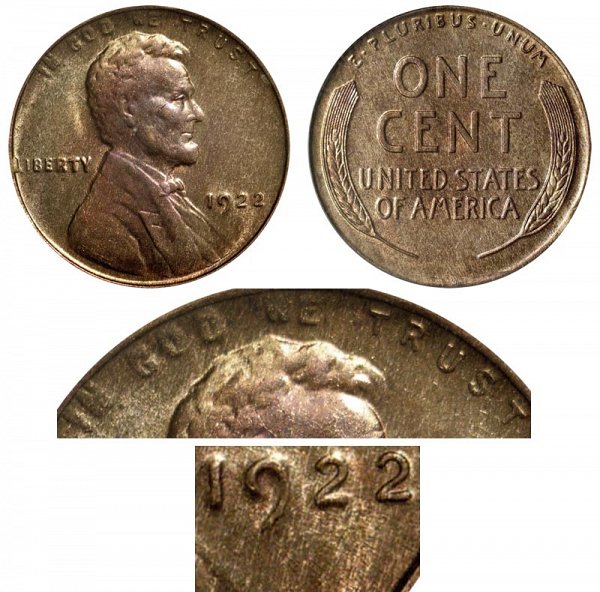
1922 D Lincoln Wheat Cent : No D Mint Mark Value Chart
Good (G-4) |
Very Good (VG-8) |
Fine (F-12) |
Very Fine (VF-20) |
Extremely Fine (EF-40) |
About Uncirculated (AU-50) |
Uncirculated (MS-60) |
Uncirculated (MS-63) |
$847 |
$970 |
$1,318 |
$1,854 |
$3,493 |
$7,132 |
$12,541 |
$30,724 |
7. 1958 P Lincoln Wheat Cent (Doubled-Die Obverse)
Grade: Uncirculated (MS-63)
Price: $219,521
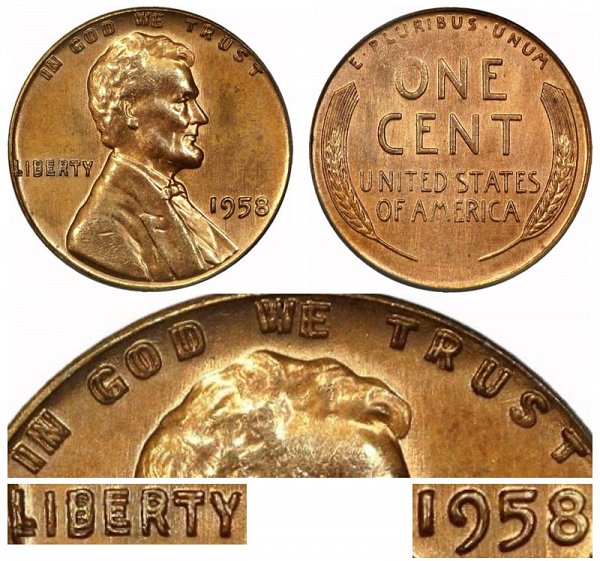
The 1958 Doubled Die Obverse is the rarest and most valuable DDO error of all of the Lincoln Wheat Cent (Penny) series. There are only a handful known to exist and the coins are best identified by the very clear doubling of the legend “IN GOD WE TRUST” and the doubling of the word “LIBERTY” on the front of the coin. In addition: the 1958 date is slightly doubled but not as prominent as the doubling of the words. These double die features can be seen in the example image of the coin above.
1958 P Lincoln Wheat Cent : Doubled-Die Obverse Value Chart
Good (G-4) |
Very Good (VG-8) |
Fine (F-12) |
Very Fine (VF-20) |
Extremely Fine (EF-40) |
About Uncirculated (AU-50) |
Uncirculated (MS-60) |
Uncirculated (MS-63) |
– |
– |
– |
– |
– |
– |
$134,490 |
$219,521 |
8. 1943 S Lincoln cent struck on bronze
Grade: Uncirculated (MS-60)
Price: $579,631
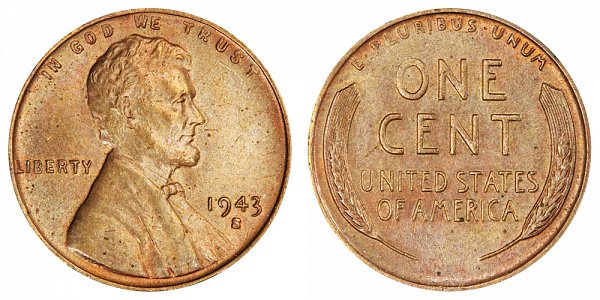
1943 S Bronze/Copper Value Chart
Good (G-4) |
Very Good (VG-8) |
Fine (F-12) |
Very Fine (VF-20) |
Extremely Fine (EF-40) |
About Uncirculated (AU-50) |
Uncirculated (MS-60) |
Uncirculated (MS-63) |
– |
– |
– |
– |
$246,227 |
$428,400 |
$579,631 |
– |
9. 1944 S Lincoln Wheat Cent : Steel Cent
Grade: Uncirculated (MS-63)
Price: $1,110,923
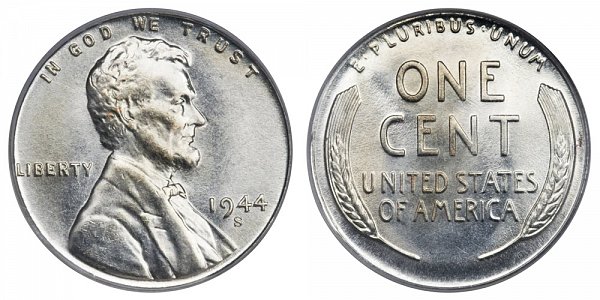
One of the rarest and most intriguing US coins is the 1944-S Steel Lincoln Wheat Cent. Nearly all pennies from 1944 are supposed have transitioned from steel back to copper/bronze. However – similar to the rare 1943 copper cent – a small number of zinc-coated steel planchets were left over from 1943 and were used in 1944 during the transition to steel planchets. The 1944 steel cent was produced at all three mints. However – Only 2 San Francisco-minted 1944-S Steel Cents are known to exist – making it rarest of the 1944 Steel Penny mints.
1944 S Lincoln Wheat Cent : Steel Cent Value Chart
Good (G-4) |
Very Good (VG-8) |
Fine (F-12) |
Very Fine (VF-20) |
Extremely Fine (EF-40) |
About Uncirculated (AU-50) |
Uncirculated (MS-60) |
Uncirculated (MS-63) |
– |
– |
– |
– |
$399,637 |
$551,320 |
$741,587 |
$1,110,923 |
10. 1943 D Copper Wheat Penny
Grade: Uncirculated (MS-65)
Price: $2,251,252
1943 Lincoln Wheat Cents look like “silver pennies” but they are actually made out of steel. During World War 2: The US needed to allocate as much copper as possible for the war effort and this included copper used for minting Lincoln Cents at the US Mint. Zinc-coated steel was used as the substitute metal composition and hence the new silver-like coin is known as the wartime steel cent or steel penny.
Series |
Location |
Quantity Minted |
1943 P Steel Cent |
Philadelphia |
684,628,670 |
1943 D Steel Cent |
Denver |
217,660,000 |
1943 D Steel Cent – Boldy Doubled Mintmark |
Denver |
N/A |
1943 S Steel Cent |
San Francisco |
191,550,000 |
Nearly all pennies from 1943 are supposed to be steel cents. However: A small number of copper planchets were left over from 1942 and were used in 1943 during the transition to steel planchets. The 1943 copper cent was produced at all three mints.
Series |
Location |
Quantity Minted |
1943 P Bronze/Copper |
Philadelphia |
20 |
1943 D Bronze/Copper |
Denver |
1 |
1943 S Bronze/Copper |
San Francisco |
5 |
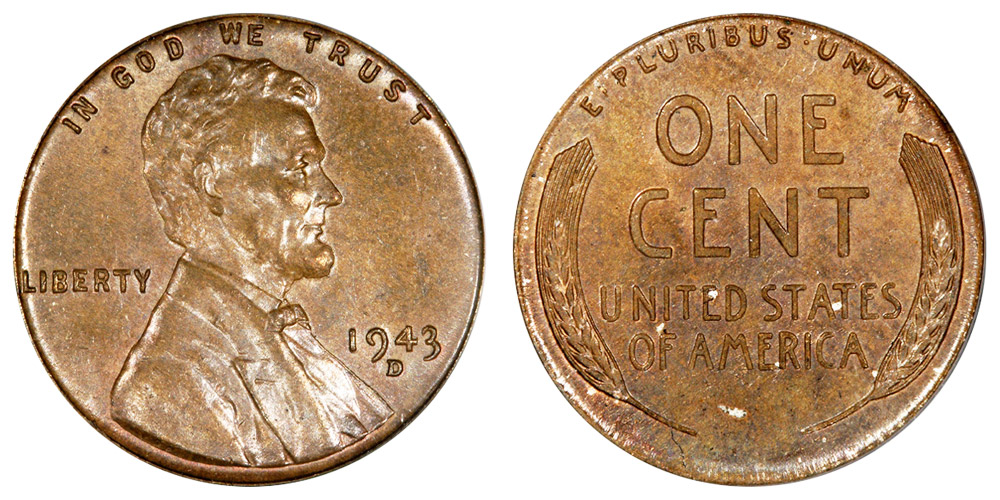
1943 D Bronze/Copper Value Chart
Good (G-4) |
Very Good (VG-8) |
Fine (F-12) |
Very Fine (VF-20) |
Extremely Fine (EF-40) |
About Uncirculated (AU-50) |
Uncirculated (MS-60) |
Uncirculated (MS-65) |
– |
– |
– |
– |
$440,374 |
$741,583 |
$886,123 |
$2,251,252 |
Factors That Can Affect Coin Value
Metal Composition
This is one of the most essential criteria evaluators use to determine if the coin is worth anything or not. Older US coins were made from precious metals like silver, gold, or platinum. Knowing this would also help inform about the melting value of your wheat penny as well.
Rarity and Market Demand
Some coins are very rare and exist only in small numbers presently. A great example is the 1943 Lincoln head copper Penny which was made when the mint even after a decision to start using steel to produce coins still mistakenly struck a bunch of pennies with copper. According to Bankrate, there are about 40 of these pennies in circulation. Also, market demand is another factor that drives the value of coins.
Proof of Provenance
This is usually useful for safeguarding against problems in the future. You’ll establish yourself as a much more credible collector if you have an ownership history or some evidence of how the coin came into your possession.
Final Words
Coin collecting is an act that somewhat integrates both having fun with what you love and having a significant investment. If you’re a coin collector, remember to do this because of your passion for collecting things and not because you’re trying to make quick money. Also, caring for your coins is vital for collecting coins.
What determines the value of a coin is its rarity and its condition at the time of discovery and sale. You may have the rarest coin, but if it’s being carelessly scratched, made dirty, and almost destroyed, the coin’s value begins to drop drastically. To preserve the inherent value of your coin, make sure you know how to handle them.
For instance, every coin collector knows and should know that you don’t take coins with your bare hands. This is because oils from your skin and germ dirt from your palms could damage the coin’s finish and value, especially if you’re dealing with very old wheat pennies that easily scratch. If you are unsure of how to pick up your coins, try picking them up from the side, i.e., the edges. There’s absolutely no good reason for you to lift your coin by touching the obverse or reverse.
To carefully place your coin in a coin box, use your cotton(not latex) gloves hands or drop them down with a soft cotton towel. Also, your coins are delicate but don’t have to gather dust. While you can’t clean them anyway to prevent wear and tear, you may use a soft brass brush to get rid of dust and give your coins a shine.

